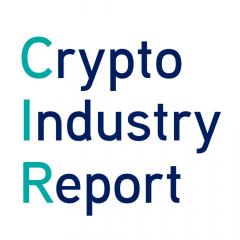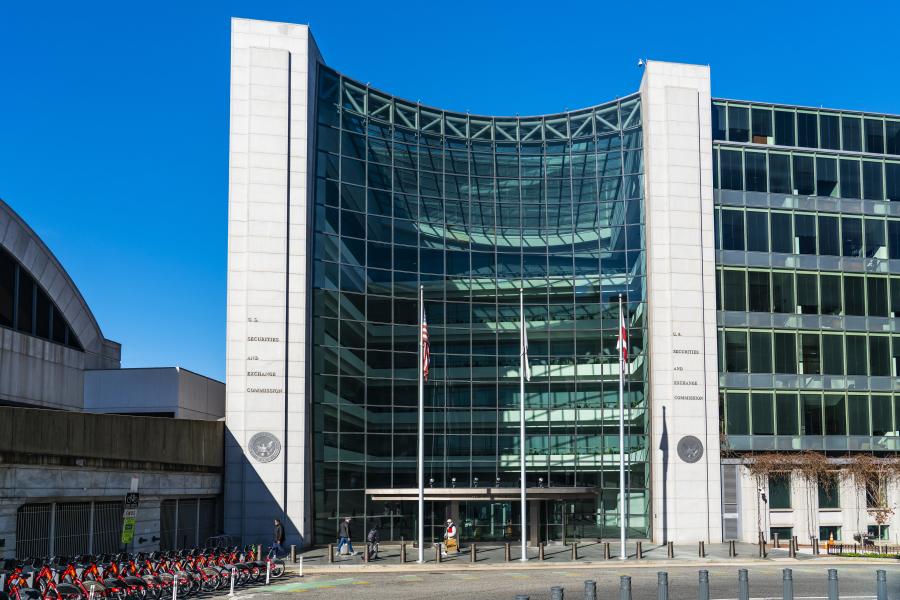Big moment for DAOs?
This week, our blockchain experts assessed the following topics:
- Big moment for DAOs?
- The emergence of bitcoin native bonds
- First fully regulated tokenised bonds is live
- Key threats to CBDC
- Market Update: Will the strengthening dollar break Bitcoin’s macro uptrend?
Our bi-weekly Crypto Industry Report provides you with valuable information on the global crypto industry – picked and analysed by our blockchain experts.
Big moment for DAOs?
The concept of DAOs, short for Decentralised Autonomous Organisations, was surely off to a bad start. After all, in April of 2016, the fist DAO project – called The DAO – was launched, only to be hacked about two months later. This hack led to the bifurcation of Ethereum, creating ETH and ETC (Ethereum Classic). Because of this incident, DAOs got a bad reputation and it took a few years to really shake this off.
With DeFi rising to prominence in summer 2020 and the subsequent ascent of NFTs (non-fungible tokens), DAOs have finally found a spot-on product market fit. Various DAOs have sprung up, enabling a decentralised crowd to invest and buy specific NFT collections in digital art and beyond. With this first use case from the digital world firmly established, numerous minds began to envision scenarios of how DAOs will soon intersect with the real world.
Recently we saw the first few come to fruition. A project by the name of CityDAO just bought 40 acres of land in the state of Wyoming. Also, a DAO formed with the intention of buying a first-edition printing of the US Constitution from 1787. While this DAO was outbid, it nevertheless raised $40 million in a span of a few days from around 17’000 pseudonymous people. And last but not least, a DAO called Kong Land wants to build a community for an open chip manufacturing in order to make sure the Metaverse stays public – even on the hardware level.
These first manifestations of DAOs intersecting with the real world might seem awkward right now but we should make no mistake about it: It presents a real game-changing in the real world adoption of DAOs, NFTs and blockchain as a whole. Before we know it, numerous DAOs will own more and more property in the real physical world. It will be interesting to see what the crypto people will try to buy next.
The emergence of bitcoin native bonds
From the viewpoint of enthusiastic Bitcoiners, the Latin American country El Salvador keeps on delivering. Its illustrious president Nayib Bukele has recently announced a new project called Bitcoin City. According to Bukele, this Bitcoin-based city will have no income or property tax, only a sales tax of 10%.
But not the low taxes have raised awareness. Just as much stir has been caused by the fact that the initial development costs for this project are to be covered by issuing a $1 billion U.S.-dollar denominated 10-year bonds that will pay a coupon of 6.5%. This bond will be split in two tranches of $500 million each. One half will be invested into bitcoin, the other half will be used for infrastructure and Bitcoin mining powered by geothermal energy.
Astonishingly, the Bitcoin bond will not be issued on any traditional exchange, but it will be launched as a tokenised bond on a Bitcoin sidechain called Liquid. Some consider this quite a big moment for Bitcoin’s evolution as a financial platform. The bond is said to be available in 2022.
In the traditional world, El Salvador’s endeavour is seen critically. The IMF warns of potential risks for financial stability. After all, by turning to Bitcoin for financing, the small Central American country is signalling that it is abandoning the path of the IMF ever more. This has also sent the country’s debt to an all-time low as investors demand higher yields.
From the Bitcoin side, people argue that this volcano bond – as it is commonly called – is quite an enticing deal. By buying a stake in the bond, an investor participates in the upside scenario of Bitcoin’s price rising, similar to a convertible bond. And while typical bonds generally have a capped upside, and bonds without it pay little to no interest, El Salvador’s bitcoin bond combines a high coupon with significant upside potential if bitcoin appreciates in value. It is therefore not unlikely that such bonds might spread – among investors and imitators alike.
First fully regulated tokenised bonds is live
The SIX’s Digital Exchange (SDX) keeps on pushing boundaries when it comes to adopting distributed ledger technology. As a world’s first, SDX has recently issued a tokenised bond in a fully regulated way. Jointly managed by Credit Suisse, UBS and Zürcher Kantonalbank, the bond was issued in two parts. The first part, which represented the digital or tokenised version, accounted for 100 million Swiss francs of the total issuance amount. The second part – CHF 50 million – was done through issuing a traditional bond.
Interestingly, the bond offering was heavily oversubscribed as it attracted strong interest from a broad base of institutional investors in Switzerland. Because the bond was issued in two different parts, the learning effects for traditional banks and investors were high. This is also the reason, why there was such a great interest from various actors to invest in this tokenised bond. After all, using distributed ledger technology to tokenise bonds enables instant settlement, which frees up liquidity and provide more efficiency. And for SDX the oversubscription was nice as net proceeds of the bond placement can be used for general financial purposes of the digital exchange.
Another country making significant progress on the blockchain front is China. A Chinese Investment Management company by the name of China Galaxy is said to run a digital yuan pilot for securities transactions in association with the state-owned bank ICBC Bank. In the process of handling the securities transactions, China’s CBDC will be used to pay for data, consulting and other services. While this is yet another pilot project, it’s worth mentioning that China’s CBDC trials have reached 140 million wallets or 10% of China’s population as of now.
Key threats to CBDCs
When it comes to digital technologies and its applications security is of utmost importance. Only if a technology and the usage thereof is secure enough, will users develop the necessary trust towards it. Security, particularly cybersecurity is a major challenge for a proper adoption of central bank digital currencies. As they seem to be in uptake around the world, government and other decision-makers are actively contemplating how this new form of digital money can be made most secure.
This November, the World Economic Forum has published an paper on CBDC technology considerations that elaborates on several key cybersecurity threats for CBDCs. There are four different dimensions identified by the WEF:
- Credential theft and loss
- Users with privileged roles
- Double-spending attacks
- Quantum computing
One of the first points of attacks for a CBDC are its access credentials, which are needed for transferring funds. If these get hacked and stolen, a user’s funds in the form of the CBDC could be at risk. Also, if access credentials were lost, users could have a hard time accessing their money. A potential remedy to counteract such risks are multi-signature set-ups or multi-party mechanisms that decentralised the potential risks.
Being based on a distributed ledger technology, a CBDC may likely have several different nodes, run by different stakeholders. Depending on the consensus protocol used, such non-central bank nodes with privileged power could declare transactions as invalid, essentially blocking them from being accepted by the network. This could lead to denial-of-service attacks for CBDC users and censorship of their transactions. Therefore, it is recommended that non-central bank nodes are not given transaction validation power unless it is absolutely necessary.
A risk further out the time curve is the rise of quantum computing. Potent quantum computer will one day compromises major data encryption methodologies cryptographic primitives used for protecting access, confidentiality and integrity of data stored and transmitted. CBDCs will not be spared. All the more important then, that threats arising from emerging quantum computers are already factor into the CBDC’s technology design of today.
Market Update: Will the strengthening dollar break Bitcoin’s macro uptrend?
On the 10th of November Bitcoin quickly shot up to an all-time high of almost $69’000 and then started breaking down. At the low end within the last few days, Bitcoin’s price wicked into the major accumulation zone between $56.2k to $53k. As some claim by looking at on-chain analysis, the $53k level could actually be a strong support for Bitcoin at the moment. The question to be asked is: Is the mother of all cryptocurrencies currently forming a higher low to establish its macro uptrend and re-confirm the continuation of the bull market?
A force pushing against this could be the US dollar itself. Since the end of May of this year, the US dollar has been steadily appreciating. Historically, a strengthening dollar has represented a head wind for Bitcoin. Whether or not the greenback will appreciate further and turn out to be the Bitcoin bull market’s ultimate show-stopper is yet unclear.
When it comes to recent news, there were quite some eye catchers that nevertheless seemed to have gone unnoticed. Although the US regulator did still not allow any Bitcoin spot ETF, it was the CEO of Australia’s largest bank Commonwealth Bank of Australia that said that banks should get involved in crypto assets despite the risks they might pose. At the same time, Australian superannuation fund Rest Super is set to become the first retirement fund in the country to invest in cryptocurrencies. With almost $50 billion in assets under management for over 1.8 million people, the retirement fund is not small fish.
Speaking of cryptocurrencies, the last few weeks saw yet another layer-1 blockchain rise to the forefront. After Solana’s uprise in the spring of this year, this time in autumn it was Avalanche time to shine. It’s coin called AVAX just recently hit a new all-time high after the blockchain project announced a partnership with consulting firm Deloitte. With layer-1 blockchains performing so well lately – not least because of Ethereum’s high transaction fees – the question is: Which one is the next to start its price rally?
Share post

Related Posts

To be continued: SEC pushes back at Coinbase
SEC pushes back against Coinbase's claim of no regulatory jurisdiction, stating the crypto exchange knowingly violated securities laws. Meanwhile, Gemini, owned by the Winklevoss twins, files a lawsuit against Digital Currency Group and CEO Barry Silbert alleging fraud and deception following the collapse of a lending venture. The Bank for International Settlements survey reveals that 93% of central banks are working on Central Bank Digital Currencies (CBDCs) which are seen as potential geopolitical policy tools and a challenge to the dollar's dominance. The race for a Bitcoin ETF intensifies, with BlackRock refiling its application featuring Coinbase as the market surveillance partner, as the Grayscale Bitcoin Trust's discount to net asset value narrows, potentially indicating the transformation into a proper ETF.

BlackRock fever: The ETF filing spree and institutional appetite
BlackRock filed for a Bitcoin ETF with the SEC, inspiring similar applications from firms like WisdomTree, Invesco, and Fidelity, and boosting Bitcoin's value. Traditional finance institutions such as Fidelity and Nasdaq are showing increased interest in crypto, with moves towards exchange and custody services. The defunct crypto exchange FTX, under new CEO John Ray III, is planning a potential revival after recovering significant assets. Meanwhile, the IMF is developing a global CBDC platform for cross-border transactions and DAI, a major stablecoin, is diversifying its backing from USDC to include real-world assets.

SWIFT explores blockchain interoperability
SWIFT has partnered with Chainlink to experiment with leveraging its infrastructure for transferring tokenized value across blockchain networks. The trials will address interoperability, regulatory challenges, and operational drawbacks for financial institutions in a blockchain environment. Chainlink will provide connectivity between private and public blockchains. SWIFT's findings will be published later this year.

China wants an Internet 3.0, while Hong Kong gears up for crypto trading launch
China is striving for advancement in Internet 3.0 technologies, with Beijing's white paper outlining plans to invest in the development of the metaverse and Web3 tech such as non-fungible tokens, but not cryptocurrencies due to the country's previous ban. Meanwhile, Hong Kong is launching its new crypto trading regulations, allowing retail investors to participate from June 1, 2023, with exchanges like Huobi Hong Kong beginning to offer spot trading to retail and institutional clients. Furthermore, the Cybersecurity and Technology Crime Bureau of the Hong Kong Police Force is launching a metaverse platform, 'CyberDefender', to educate the public about potential threats and crime prevention in the metaverse.

BRC-20: Innovating on Bitcoin is the new cool
A new Bitcoin “token standard” called BRC-20 is the hottest thing right now in the crypto space. It was introduced in March 2023 by a pseudonymous person called Domo. Bitcoin Request for Comment 20 (BRC-20) is an experiment that brings fungible tokens to the Bitcoin blockchain using the Ordinals protocol. Ordinals rely on ordinal theory, enabling the identification and tracking of individual satoshis within Bitcoin's existing supply, while also allowing them to be inscribed (associated) with data. Through this technique, satoshis (sats) are given ordinal numbers starting with zero. Anyone can add a script file to a sat to create and transfer a BRC-20 token on the Bitcoin blockchain. BRC-20 tokens are created using three functions: deploy, mint, and transfer.

US versus EU: Giants fighting for regulatory clarity
It is official now: The European Parliament voted overwhelmingly in favour of Markets in Crypto Assets (MiCA), legislation that will guide the crypto sector in all 27 European Union member states. 517 parliament members voted for it, while 38 voted against it. This approval makes Europe the first continent with comprehensive rules for cryptocurrencies. Also, it means that all EU member states will have unified crypto regulations. So, if a crypto business is approved in one EU member country, it could easily expand operations to another member state. The EU’s milestone was lauded by Binance as well as Kraken and Coinbase.

Ethereum: Another milestone reached with the Shanghai Update
On April 12, 2023, Ethereum successfully executed the planned Shanghai update also known as Shapella. The upgrade allows validators to unstake their staked ETH and withdraw their rewards, as well as staked ether if chosen. Now that another level of uncertainty has waned for the biggest smart contract blockchain, this new feature could attract more investors to stake their ether.

CFTC versus Binance:
Clash of the titans
The world’s leading crypto exchange by volume, Binance, alongside its CEO, Changpeng Zhao, and ex-Chief Compliance Officer, Samuel Lim, are being sued by the US Commodity Futures Trading Commission (CFTC).

Stablecoin USDC briefly lost its
peg. What do we learn from this?
One of the top stablecoins by market cap, USD Coin (USDC), de-pegged briefly from the US dollar on March 11 following the collapse of Silicon Valley Bank (SVB). Circle, the stablecoin’s issuer, held $3.3 billion in USDC reserves with the bank, which caused panic as investors rushed to withdraw their funds, assuming USDC could implode because of insufficient backing. However, the amount represented less than 8% of the stablecoin’s reserves.

Ethereum Shanghai upgrade pushed to April: Will there be too much selling pressure?
Ethereum stakers have been eagerly awaiting the Shanghai upgrade, which will enable them to withdraw their staked ether. Stakers’ funds have been locked since Ethereum introduced the proof-of-stake Beacon Chain in December 2020. The upgrade was originally slated to take place sometime in March but was pushed by about two weeks to April during a recent execution layer meeting.